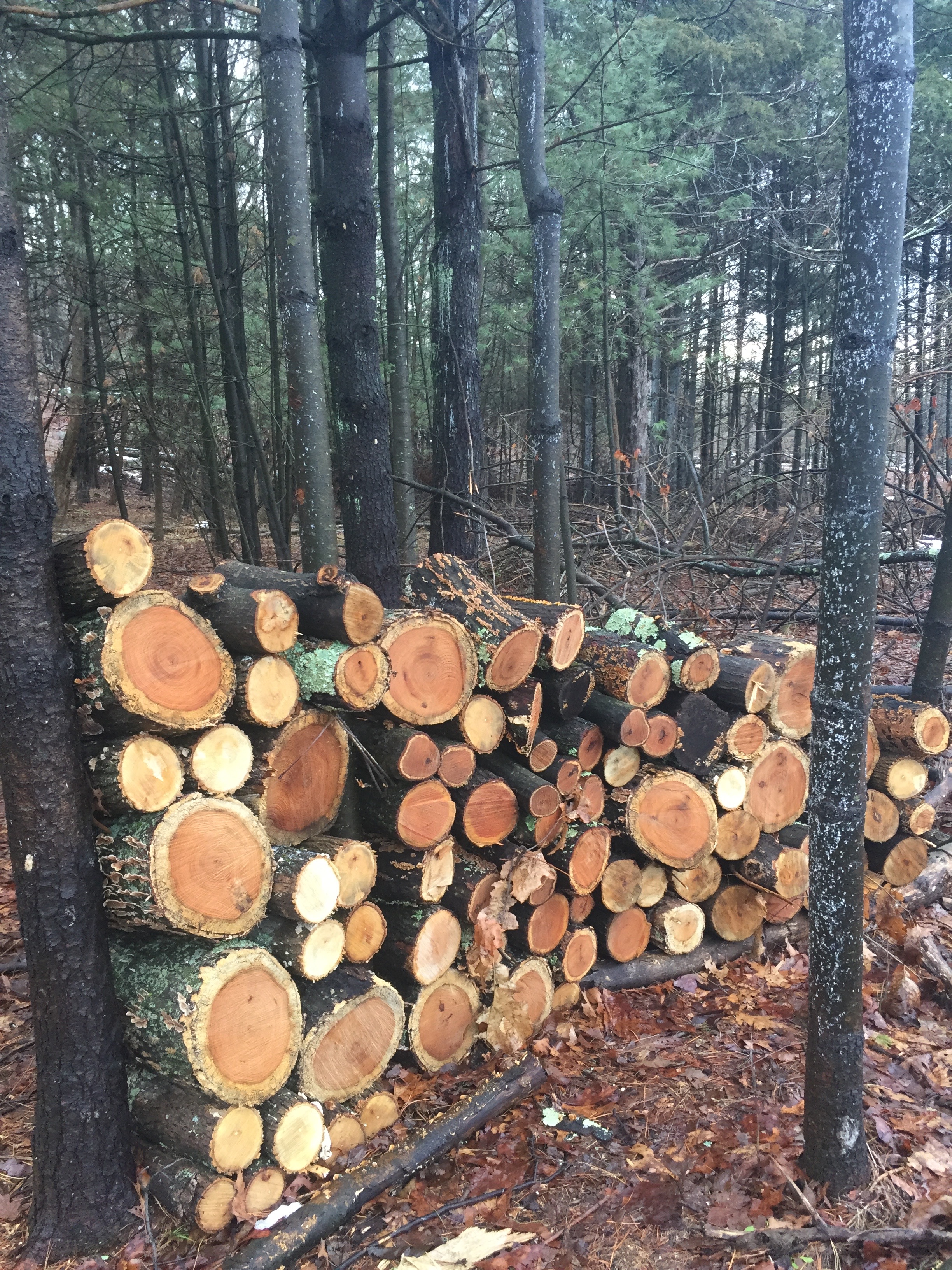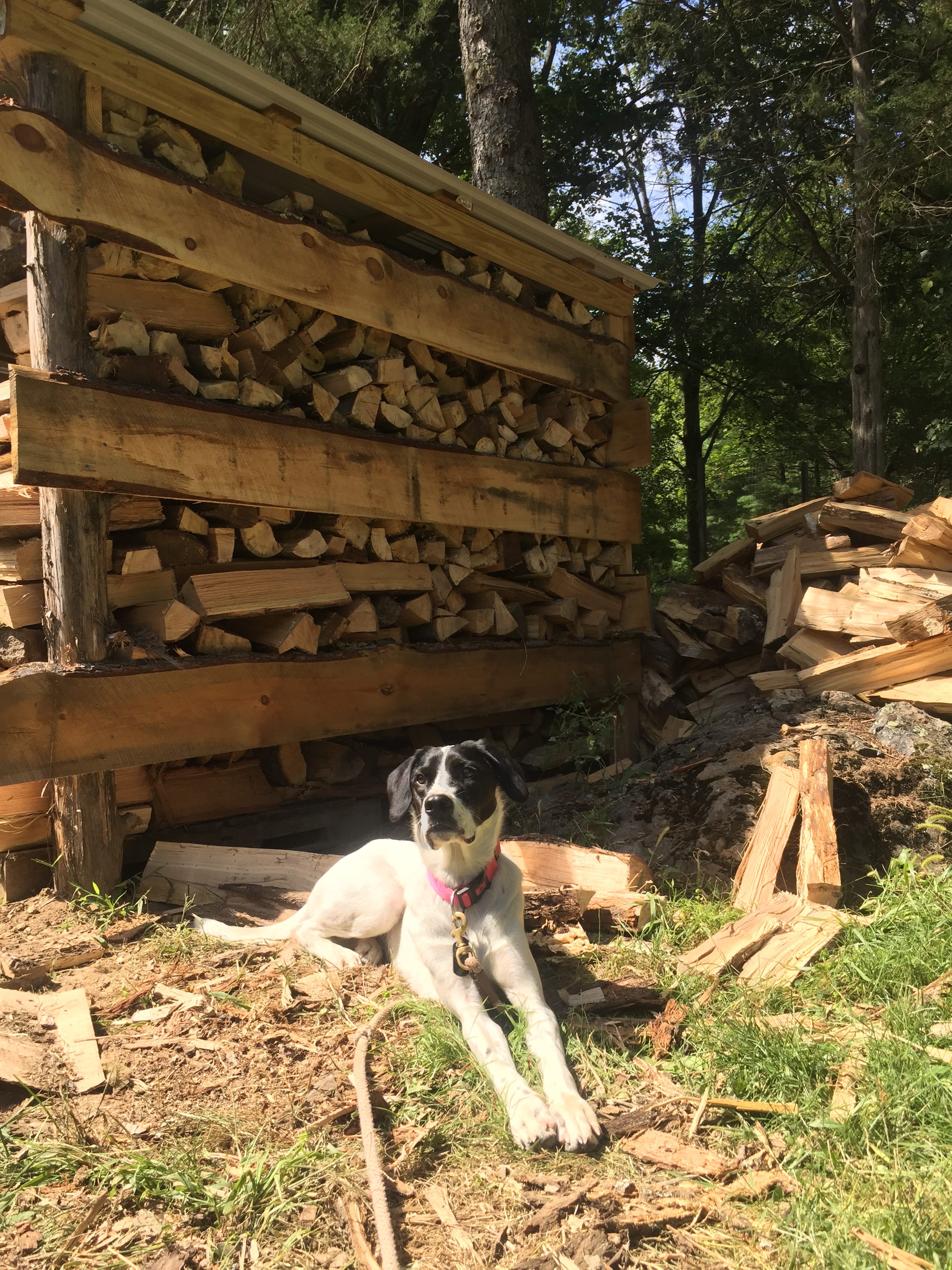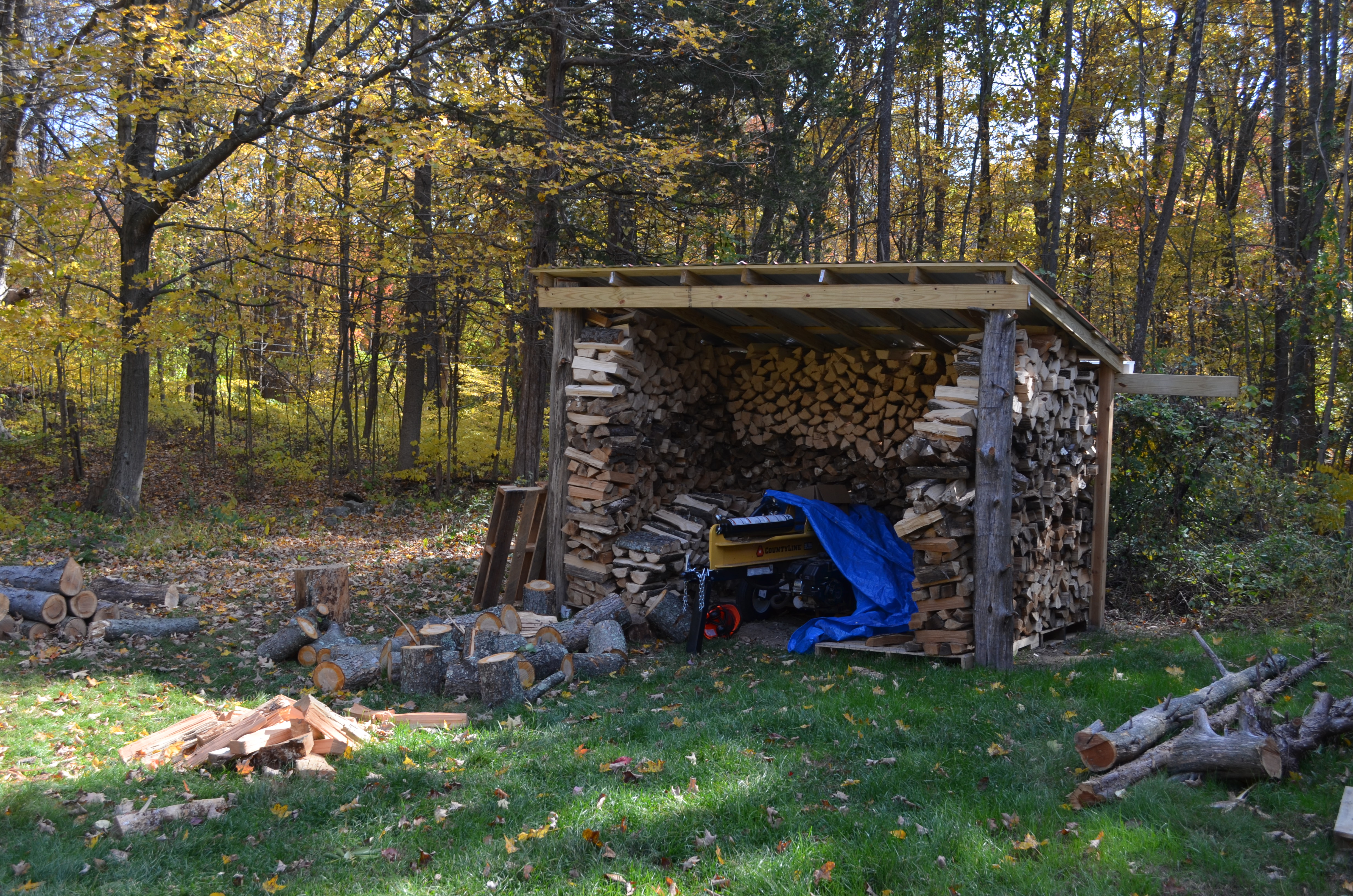It wasn’t too long after we moved into our house that we noticed our neighbor, who already had numerous neatly stacked and covered piles of firewood, was still chopping, splitting, and stacking wood. One of his many words of wisdom was to have more than enough and to get it early and often. There are many reasons why early and often make sense, but the main factor is giving the wood time enough to dry out.

Making time for a task like getting firewood was important to us. It’s a long process which involves touching and moving heavy wood numerous times while also operating potentially dangerous equipment. So is the juice worth the squeeze?
We have a fancy Jotul cast iron wood burning stove in our house that was here when we moved in. It’s right in the entryway which is a real treat when coming in from the cold. We discovered our first fall that it does actually heat the entire house if it’s on long enough and has been burning hot enough. Seems pretty great to me. The steady heat from the stove is also a real positive for us. Our stove is surrounded by windows so it creates a really nice nook to read a book or take a snooze.

Regarding the environmental impact, to heat our house using our boiler and forced hot water requires a lot of petroleum products. We were complimented numerous times on how great and efficient our inherited Buderus oil burner is, but there is a real cost to extracting, refining, transporting and burning the final product. There’s also a real cost to in the tune of $2-4/gallon! We view our boiler at the moment as a back up heat system…and a source of hot water for showers!
But to produce firewood has an environmental impact as well. There’s gas and oil to operate the chainsaw, more gas for the truck to help transport the wood, and then more gas and oil to operate our hydraulic splitter.

When it came down to it, the actual amount of gas used for all those tasks was probably less than 20 gallons. The truck used little fuel as it stayed off and parked while doing most of the filling/unfilling. The chainsaw is a necessary tool on the farm and it too is pretty efficient when sharp at making rounds for the splitter. My biggest gripe about the splitter is the noise, not the sipping it does on fuel when running.

That being said, it may turn out that the actual burning of the wood has a larger environmental impact than operating the boiler. There is still a lot to be considered. Permaculture is about creating back up systems, and having the boiler as a secondary heat source while we are able to burn firewood provides us some security.
But before we could start using the stove in the fall, there were months of preparations. When we moved in we found what appeared to be a mountain of firewood that was left by the previous owner on some pallets covered by tarps. Aside from looking absolutely shabby, this was not a long term solution as the tarps were breaking down and as a result not keeping the wood nearly as dry as it needed to be and creating a lot of debris for us to clean up.

Our solution was simple: build a proper wood shed out of sustainable materials that will last a LONG time, unlike the tarps and pallets which were breaking down. I think another post will go into the construction and planning of the wood shed, but suffice to say, after building the first woodshed, we were extremely happy with the results, so we built another. Again, having too much wood is a good thing.

So, I’m writing this in March. The woodshed we built holds about 6 cords of wood. The dimensions of the shed are 8’x6’x16′, and before the winter we managed to fill it completely floor to ceiling. It was 70 degrees a week or so ago and with roughly 1/6th remaining of wood, I thought we were plenty in the clear.

Now that it’s snowed 2 feet, well, I’m not too sure the shed holds enough wood. Luckily, our second shed, which also serves as the protected home for our splitter, is another backup.
